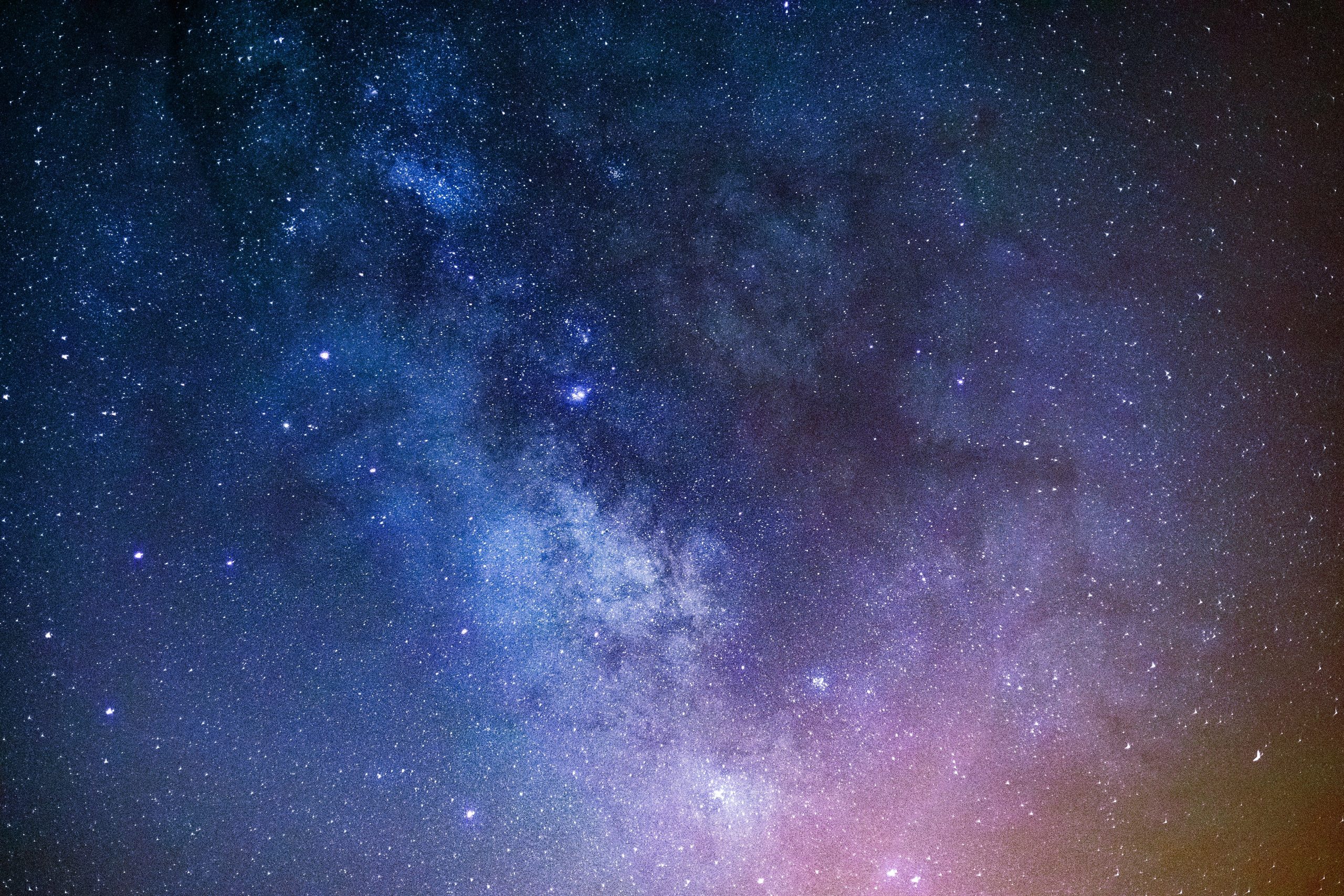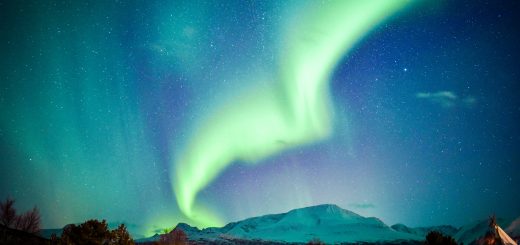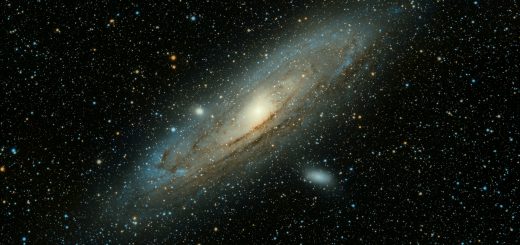The Religious Ceremonies of the Mayan Civilization

Hey there, amazing readers! 🖐️ Just a quick note: yes, we know there are a lot of ads here. Trust us, we get it—it’s not the prettiest look, but they help us keep this blog alive and kicking. Those pesky little ads cover the costs of all the behind-the-scenes magic, from hosting and tech stuff to creating content we hope you’ll love.
We’re committed to delivering quality posts, and your support (even just sticking around despite the ads) means everything to us. So, bear with us, and thanks for helping us keep the good vibes rolling. Now, on to the fun stuff! 😉
TRANSLATE BUTTON AT THE END OF THE ARTICLE
A Quick Overview
When I think about the Mayan civilization, I can’t help but marvel at the rich tapestry of their spiritual life.
Their religious ceremonies were not just rituals; they were a vibrant expression of their beliefs, culture, and connection to the universe.
The Mayans were deeply intertwined with their environment, and their spirituality reflected this profound relationship.
From colorful festivals to intricate rituals involving music, dance, and offerings, the Mayan ceremonies were complex yet beautiful.
Let’s dive deep into the fascinating world of Mayan spiritual practices and unravel the layers that made them so unique.
An Introduction to Mayan Spirituality and Beliefs
Mayan spirituality was a complex system of beliefs that intertwined the mundane with the divine.
The Mayans held a pantheon of gods, each representing various aspects of life and nature.
They believed that these gods influenced everything—from the growth of crops to the changing of the seasons.
The Mayans viewed life as cyclical, with concepts of time that differed from the linear approach we often take today.
Rituals were a vital part of this spiritual framework.
They weren’t just for show; they were a means of communication with the divine.
Through these ceremonies, the Mayans aimed to maintain balance in their lives and the world around them.
They believed that every action had repercussions, and rituals were designed to appease the gods and ensure harmony.
Moreover, spirituality was accessible to everyone in the community.
Participation in religious ceremonies fostered a sense of belonging and unity.
Families gathered to celebrate life events or seasonal changes, reinforcing communal ties while honoring their beliefs.
The Mayans also placed great importance on the afterlife.
They believed in multiple layers of existence, including the underworld, which they called Xibalba.
Ceremonies often involved rituals to honor the deceased, ensuring a smooth transition to the afterlife.
This belief in an ongoing connection with ancestors added another layer of depth to their spiritual practices.
The Role of Gods in Mayan Religious Practices
At the core of Mayan religion stood a multitude of gods.
Each deity had distinct attributes and was responsible for different facets of life.
For instance, the god Kukulkan, often represented as a feathered serpent, symbolized wind, rain, and the agricultural cycle.
The Mayans prayed to him for favorable weather and abundant harvests.
The gods were perceived as powerful entities, capable of both benevolence and wrath.
The Mayans believed that pleasing the gods through rituals and offerings would bring good fortune.
Conversely, neglecting these practices could lead to disasters such as droughts or plagues.
It created a deep sense of urgency to adhere to their religious obligations.
Communicating with the gods took many forms.
Priests, acting as intermediaries, played a crucial role in this relationship.
They performed ceremonies that included prayers, offerings, and sacrifices to appease the deities.
The rituals were often elaborate, with the priests donning special garments and using sacred objects.
The Mayans also observed celestial movements, recognizing that the gods could communicate through the stars.
They developed a sophisticated understanding of astronomy, using it to time their rituals accurately.
For example, certain ceremonies were held during specific lunar phases, believed to enhance their effectiveness.
In essence, the gods served as the focal point around which Mayan life revolved.
They were seen as both protectors and judges, shaping the community’s fate based on the adherence to traditional practices and rituals.
Sacred Calendars: Timing the Ceremonies Right
Time management in the Mayan civilization was nothing short of extraordinary, thanks to their intricate calendar systems.
The Mayans used several calendars, but the Tzolk’in (a 260-day ritual calendar) and the Haab’ (a 365-day solar calendar) were the most critical.
These calendars were interlinked, creating a 52-year cycle known as the Calendar Round.
Ceremonies were meticulously planned around these cycles.
Each day had its own significance, and specific rituals were intended for particular days.
For example, certain days were deemed auspicious for planting crops, while others were reserved for honoring the gods.
The Tzolk’in calendar, with its combination of 20 day signs and 13 numbers, was essential for timing religious ceremonies.
Priests would consult the calendar to determine the best days for festivals, sacrifices, or other important events.
This reliance on the calendar highlighted the Mayan belief in the cyclical nature of existence.
Festivals aligned with the agricultural cycle also played a significant role.
For instance, the planting season was marked by ceremonies to encourage growth and fertility.
Conversely, harvest festivals celebrated the bounty of the earth and involved communal feasting and rituals of gratitude.
The awareness and observance of time were crucial to maintaining the cosmic order in Mayan belief.
The synchronization of rituals with astronomical events demonstrated a profound understanding of their environment and a commitment to honoring the natural world.
The Significance of Offerings in Mayan Rituals
Offerings were a cornerstone of Mayan ceremonies.
They expressed gratitude, sought favor, or appeased the gods.
These offerings could take many forms, ranging from simple food items to elaborate sacrifices.
The type of offering depended on the deity being honored and the purpose of the ritual.
Food offerings often included maize, beans, and fruits, staples in the Mayan diet.
These items symbolized life and sustenance, making them appropriate gifts to the gods.
In more elaborate ceremonies, animals such as birds or even human sacrifices were performed, reflecting the seriousness with which the Mayans treated their spiritual obligations.
The act of giving was deeply symbolic.
By presenting offerings, the Mayans demonstrated respect and acknowledgment of the divine forces that governed their lives.
It was a way of reinforcing the bond between the spiritual and the earthly realms.
Another fascinating aspect was the use of blood as an offering.
The Mayans believed that blood contained life force.
Rituals often involved self-sacrifice, where priests would pierce their ears or tongues and collect their blood as an offering.
This intense act highlighted the commitment and devotion the Mayans had towards their beliefs.
After the offerings were made, it was common for participants to engage in communal meals, further strengthening the bonds between the community members.
Sharing food after ceremonies emphasized unity and the importance of community in the Mayan worldview.
Vibrant Festivals: Celebrating the Divine
Festivals in the Mayan civilization were vibrant and immersive experiences.
They combined music, dance, food, and rituals to create a celebratory atmosphere.
Each festival had its own unique focus and was often tied to agricultural cycles, historical events, or specific deities.
Take, for instance, the Festival of the New Year, called "Wajxaklajun." This celebration marked the start of the new agricultural cycle.
It involved rituals to bless the earth and secure a successful harvest.
The excitement was palpable, as communities came together to partake in feasting, dancing, and various games.
Another significant festival was the "Day of the Dead," which honored ancestors and those who had passed.
Families would create altars adorned with photographs, food, and offerings to ensure their loved ones’ spirits found the way home.
The atmosphere was both somber and festive, celebrating life while honoring death.
During these festivals, the Mayans engaged in traditional dances that often depicted stories of creation and mythology.
The rhythmic beats created a sense of unity, drawing everyone into the celebration.
Music played a crucial role, with instruments like drums, flutes, and maracas animating the atmosphere.
Moreover, masks were commonly worn during these festivities.
They held symbolic meaning and represented various deities or spirits, adding layers of depth to the celebrations.
Participants often felt transformed, stepping into a spiritual realm where the line between the earthly and divine blurred.
These festivals were not just about celebration; they were a reaffirmation of identity, culture, and spirituality.
They brought communities together, fostering social ties and reminding everyone of their shared beliefs.
The Power of Music and Dance in Worship
Music and dance were at the heart of Mayan religious practices.
They were not merely entertainment; they were profound expressions of spirituality.
Both served as powerful tools to connect with the divine and invoke blessings from the gods.
The instruments used in Mayan ceremonies varied widely.
Drums, flutes, and rattles filled the air, creating a rhythmic pulse that resonated with the heartbeat of the earth.
The sound of music was believed to attract the attention of the gods, enhancing the power of the rituals.
Dance, too, played an integral role in ceremonies.
It allowed participants to express their devotion physically while embodying the stories and myths of their culture.
Dancers often wore elaborate costumes and masks, representing gods or animals, adding a visual dimension to the spiritual experience.
Choreography was not random.
Each movement had meaning, often mirroring natural phenomena or historical events.
Through dance, the Mayans celebrated their lineage, history, and connection to the cosmos.
It was a way to honor their ancestors and maintain the continuity of their cultural narrative.
One could argue that music and dance brought the community together.
Festivals were communal affairs, and the shared experience of rhythmic movement fostered a sense of unity.
It was an invitation for everyone to participate, regardless of their social status.
In essence, the combination of music and dance transformed ordinary rituals into lively celebrations of faith.
These artistic expressions were a way for the Mayans to engage with their spirituality, leaving a lasting legacy that echoed through generations.
Rituals of Life: Birth, Marriage, and Death
Life’s milestones were marked by significant rituals in Mayan culture.
Birth, marriage, and death were not just personal events; they were communal occasions steeped in spiritual significance.
When a child was born, a series of rituals took place to bless the newborn.
The child’s name was often given in a ceremony that included offerings to the gods.
This rite aimed to ensure the child would lead a prosperous life, protected from malevolent spirits.
Marriage ceremonies were equally elaborate.
They involved rituals to seek blessings from deities for a fruitful union.
Beyond the binding of two individuals, marriages were viewed as a means to strengthen families and communities.
The celebration typically included feasting, dancing, and the exchange of tokens or gifts symbolizing commitment.
Death in Mayan culture was viewed as a transition rather than an end.
Funerals involved a series of rituals designed to guide the deceased’s spirit to the afterlife.
Family members would hold ceremonies, offering prayers and food for the departed souls.
They believed that honoring the dead ensured their continued presence and support in the lives of the living.
Additionally, special days were dedicated to commemorating ancestors.
These rituals allowed families to connect with their heritage, keeping the memory of loved ones alive.
It reinforced the idea that death was merely a part of a larger cycle.
In this way, Mayan rituals around life events highlighted their beliefs in continuity and interconnectedness.
Each ceremony was a reminder of the spiritual journeys that individuals undertook as they moved through different phases of life.
The Mystical Use of Ceremonial Fire
Fire held a sacred place in Mayan rituals.
It was perceived as a mediator between the human and divine realms, serving as a conduit for communication with the gods.
The flames symbolized purification, transformation, and renewal.
During ceremonies, fire was commonly used for offerings.
Participants would burn items such as incense or food, sending their prayers and intentions upward.
This act was viewed as an essential way to capture the attention of the gods.
Specific rituals involved lighting fires in designated areas, often within temples or sacred sites.
The flames created an atmosphere of reverence and focused energy, enhancing the effectiveness of the ceremonies.
The flickering light and warmth connected participants to ancient traditions and the cosmic forces at play.
Moreover, fire was a symbol of life itself.
The Mayans believed it had the power to transform the natural world.
It was used in agricultural rituals, where the flames would burn old crops to prepare the soil for new growth.
This cyclical relationship with fire underscored the interconnectedness of all life.
Rituals involving fire were often accompanied by chants and prayers, creating a multi-sensory experience.
The combination of sight, sound, and smell heightened the spiritual atmosphere, drawing participants into a deeper state of awareness.
In essence, fire was more than just a practical element; it was a sacred force that enhanced the spiritual experience.
Its presence in rituals underscored the Mayans’ understanding of the cycles of life and the significance of transformation.
Temples and Altars: The Heart of Worship
Temples and altars were the epicenters of Mayan religious life.
They were not just physical structures; they represented the connection between the earthly and the divine.
Each temple was dedicated to specific deities, and their architectural designs often reflected cosmological beliefs.
The grand temples, often built on elevated platforms, served as spaces for public ceremonies.
They were adorned with intricate carvings and paintings that depicted gods, mythological creatures, and historical events.
These visuals told stories that connected the community to their rich heritage.
Altars within these temples played a crucial role during rituals.
They were often the focal point where offerings were made.
The careful arrangement of items on altars showcased the importance of the rituals taking place, reflecting the dedication of the participants.
The layout of these sacred spaces was meticulous.
Priests understood the significance of orientation and placement, ensuring that worshipers faced the correct direction to engage with the divine effectively.
This careful planning demonstrated the Mayans’ deep respect for cosmic order.
Additionally, these temples were often positioned to align with celestial events, such as solstices and equinoxes.
This alignment strengthened the connection between the physical and spiritual worlds, allowing worshipers to experience a sense of unity with the universe.
Visiting these temples was a communal affair.
People gathered to participate in rituals, celebrating their shared beliefs.
The collective energy during ceremonies elevated the spiritual experience, emphasizing the importance of community in worship.
In summary, temples and altars were not just places of worship; they were living symbols of the Mayan worldview.
They encapsulated the civilization’s artistic creativity, religious devotion, and deep understanding of their environment.
Sacred Sites: Pilgrimages and Sacred Journeys
Sacred sites were integral to Mayan religious practices.
These locations held significant spiritual energy and were often seen as portals to the divine.
Pilgrimages to these sites were common, allowing individuals and communities to deepen their spiritual connection.
One renowned site was Tikal, a sprawling ancient city featuring towering temples and plazas.
Pilgrims visited Tikal to participate in ceremonies, pay homage to deities, and seek guidance.
The site was steeped in history and spirituality, creating an atmosphere charged with reverence.
Other sacred sites were associated with specific agricultural practices.
For instance, locations near water sources were revered for their life-giving properties.
Rituals performed at these sites often focused on fertility and abundance, reflecting the Mayans’ deep appreciation for nature.
The journey itself held significance.
Traveling to sacred sites was viewed as a transformative experience.
Pilgrims often engaged in rituals along the way, reflecting on their intentions and seeking spiritual clarity.
This practice fostered a sense of community, as groups journeyed together, sharing stories and prayers.
Upon reaching the sacred site, pilgrims participated in ceremonies tailored to honor the specific deities associated with that location.
The communal aspect of these events reinforced social bonds and individual connections to their culture and beliefs.
The practice of pilgrimage underscored the Mayans’ respect for nature and the cosmos.
Each site was a reminder of the interconnectedness of life, history, and spirituality, creating a holistic approach to their religious practices.
The Influence of Nature in Religious Ceremonies
Nature was a central theme in Mayan spirituality.
The Mayans believed that the natural world was imbued with spiritual significance, and their ceremonies reflected this connection.
Natural elements like water, earth, fire, and air were all integral to their rituals.
Water, for instance, symbolized life and purification.
Ceremonies often took place near rivers or lakes, where offerings were made to honor water deities.
The act of immersing oneself in water during rituals was seen as a way to cleanse the spirit and seek renewal.
Earth, too, held profound significance.
The Mayans revered the soil as the source of nourishment and life.
Agricultural rituals often involved digging into the earth, planting seeds, and making offerings to ensure a bountiful harvest.
These practices highlighted their dependence on nature for survival and well-being.
Fire created a transformative atmosphere during rituals.
Its flickering flames were believed to convey prayers and intentions to the gods.
Fire was also essential in agricultural practices, where controlled burns prepared the land for new growth.
The changing seasons dictated the timing of ceremonies.
The Mayans aligned their rituals with the agricultural calendar, celebrating planting and harvest times.
Seasonal festivals not only honored the gods but also reflected gratitude for the gifts of nature.
In essence, nature was woven into the very fabric of Mayan spirituality.
Their ceremonies served as a reminder of the interconnectedness of life, the environment, and the spiritual world.
Such practices taught them to live in harmony with their surroundings, respecting the cycles of nature.
Preserving the Legacy: Modern Mayan Traditions
Today, many Mayan traditions persist, blending ancient beliefs with contemporary practices.
While the civilization faced significant challenges, including colonization, their spiritual legacy endures.
Modern Mayan communities continue to celebrate festivals that honor their ancestors and deities.
Events like Day of the Dead and harvest festivals reflect a deep-rooted respect for their cultural heritage, allowing them to pass down traditions to future generations.
Ceremonies today often incorporate traditional dress, music, and dance, echoing the vibrant celebrations of the past.
The importance of community remains central, as families and friends gather to commemorate significant life events and seasonal changes together.
Spiritual leaders, often referred to as shamans or priests, play a vital role in preserving these traditions.
They guide rituals, offer counsel, and ensure that the wisdom of the ancestors continues to be honored.
Additionally, many Mayan communities are actively working to document and revitalize their languages, stories, and rituals.
This effort fosters a sense of pride in their identity and reinforces the importance of cultural continuity.
While modern influences are evident, the essence of Mayan spirituality remains intact.
The belief in the interconnectedness of life, nature, and the divine continues to shape their worldview and practices.
In conclusion, the religious ceremonies of the Mayan civilization are a captivating blend of spirituality, community, and reverence for the natural world.
These rituals were not merely acts of devotion but reflections of a way of life that celebrated the beauty and complexity of existence.
As we explore these traditions, we gain a deeper appreciation for the Mayan people’s legacy, one that continues to inspire and resonate in today’s world.
Conclusion
The Mayan civilization’s religious ceremonies offer us a window into their rich spiritual life.
Through their beliefs, we observe a people deeply connected to their environment and each other.
From the intricate rituals surrounding life events to the vibrant festivals celebrating their gods, every aspect is infused with meaning.
As we learn about the Mayans’ past, we also recognize the importance of preserving their traditions for future generations.
Their legacy teaches us about resilience, community, and the significance of honoring the sacred in our lives.

The Enlightenment Journey is a remarkable collection of writings authored by a distinguished group of experts in the fields of spirituality, new age, and esoteric knowledge.
This anthology features a diverse assembly of well-experienced authors who bring their profound insights and credible perspectives to the forefront.
Each contributor possesses a wealth of knowledge and wisdom, making them authorities in their respective domains.
Together, they offer readers a transformative journey into the realms of spiritual growth, self-discovery, and esoteric enlightenment.
The Enlightenment Journey is a testament to the collective expertise of these luminaries, providing readers with a rich tapestry of ideas and information to illuminate their spiritual path.
Our Diverse Expertise 🌟
While our primary focus is on spirituality and esotericism, we are equally passionate about exploring a wide range of other topics and niches 🌍📚. Our experienced team is dedicated to delivering high-quality, informative content across various subjects ✨.
To ensure we provide the most accurate and valuable insights, we collaborate with trusted experts in their respective domains 🧑🏫👩🏫. This allows us to offer well-rounded perspectives and knowledge to our readers.
Our blog originally focused on spirituality and metaphysics, but we’ve since expanded to cover a wide range of niches. Don’t worry—we continue to publish a lot of articles on spirituality! Frequently visit our blog to explore our diverse content and stay tuned for more insightful reads.





